Last Updated on 13/09/2024
At least as famous as every refreshing sip of Assam tea is one of its most important landscape- the Kaziranga National Park. Notable among the many protected areas of India in achieving considerable success in wildlife conservation, this prominent biodiversity facade gracing the lands of the north eastern region of India rests in quite a few splendors of its own. Majestic wildlife, vibrant flora, green premises and a charm that you rarely get to encounter elsewhere in the country, this is a World Heritage Site significant beyond measure. Enticing every nature lover with its vast amassment of beauty and biodiversity, the Kaziranga National Park is a virtual paradise. Here’s listing the top 9 things the Kaziranga National Park is famous enough for you to take a detour to this land of greens and gaiety-
Natural Beauty
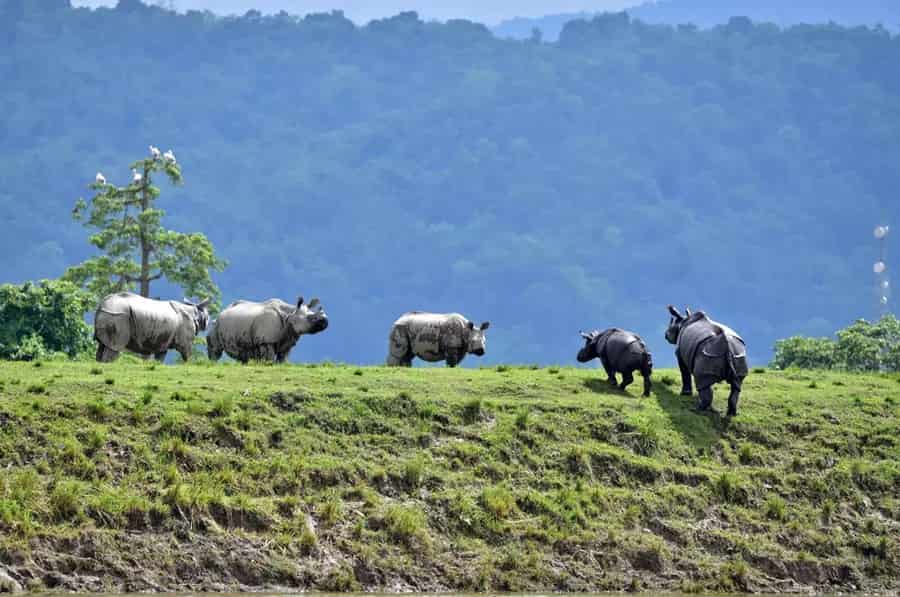
Being nestled in the enchanting land of Assam in northeast India, Kaziranga National Park is a world famous tourist destination as much in its natural beauty as it is in its wildlife. Surrounded by some of the most breathtaking tea estates and gardens, the park sits in the abundance of green glory. Spectacular landscapes, soothing environs, pristine horizons and a canopy of refreshing greens closely guard the many treasures the Kaziranga National Park is so famous for. In its natural ambience and unadulterated beauty, the national park is undoubtedly a haven for every nature lover.
History
As a prominent tourist attraction, one that resides in great biodiversitical significance, the Kaziranga National Park sure is a happy hunting ground for nature connoisseurs in its present state. But equally significant is the history this global conservation site stems of. A century old park, the Kaziranga National Park came into being in 1905 under the aegis of the then Indian viceroy Lord Curzon and his wife Mary Curzon.
As a site reputed for its one horned rhinoceros even back then, it despaired Mary Curzon that she could not spot a single of the vulnerable species. It was on her insistence that the Viceroy took steps to establish Kaziranga as a protected area that would guard and conserve these dwindling animals. In its unlikely history therefore, the now famous National Park had its modest beginnings as the Kaziranga Proposed Reserve Forest. Apart from its natural endowments therefore, it is also this piece of unusual history that renders the Kaziranga National Park all the more famous a travel destination.
Check out:
UNESCO World Heritage Site
Designated a UNESCO World Heritage Site since 1985, the Kaziranga National Park is undoubtedly famous in its esteemed standing. From a reserve forest to a wildlife sanctuary and then to a national park, Kaziranga has had a long history of conservation that made it the center of international attraction to naturalists. But perhaps what fetched this natural haven even more attention was its designation as a World Heritage Site by UNESCO.
Noted for its unique natural environment, the park represents one of the last unmodified natural areas in the north-eastern region of India. In housing the largest population of the one horned rhinoceros in the world as well as in its many other defining attributes that establish it as one of the finest wildlife refuges in the world, the UNESCO World Heritage Site status granted upon the already world famous park only served to amp its importance in the ecological scene concerning the world.
Home to the Largest Population of the One Horned Rhinoceroses
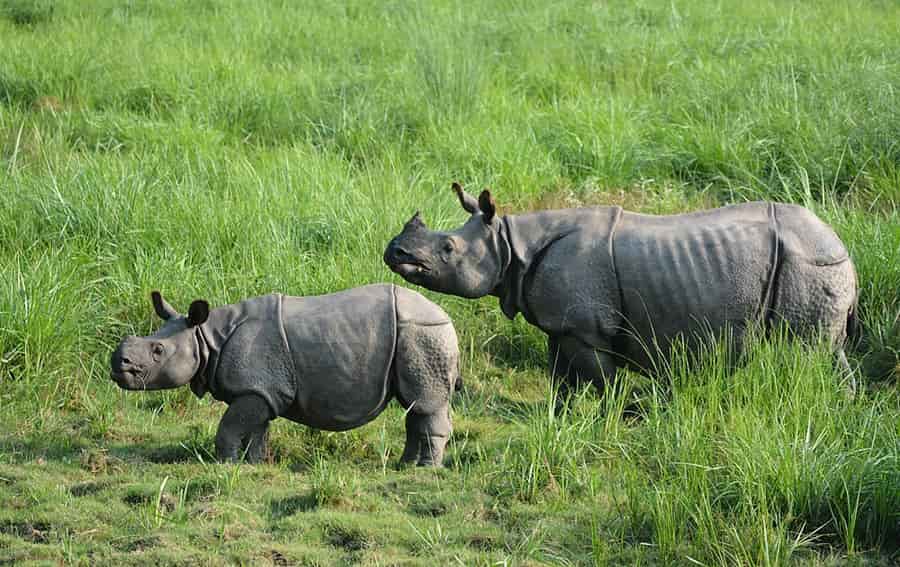
Most famous for its greater one horned rhinoceros, the Kaziranga National Park harbours a singularly significant population of the vulnerable species. In its wholehearted conservation efforts, KNP has been instrumental in saving the then rapidly dwindling numbers of rhinoceros from the brink of extinction at the turn of the 20th century. Hosting two thirds of the second largest living rhinoceros of the world, the park boasts 2413 one-horned rhinos as per the 2018 census. However the park happens to be equally infamous in its numerous instances of rhino poaching.
Important Bird Area
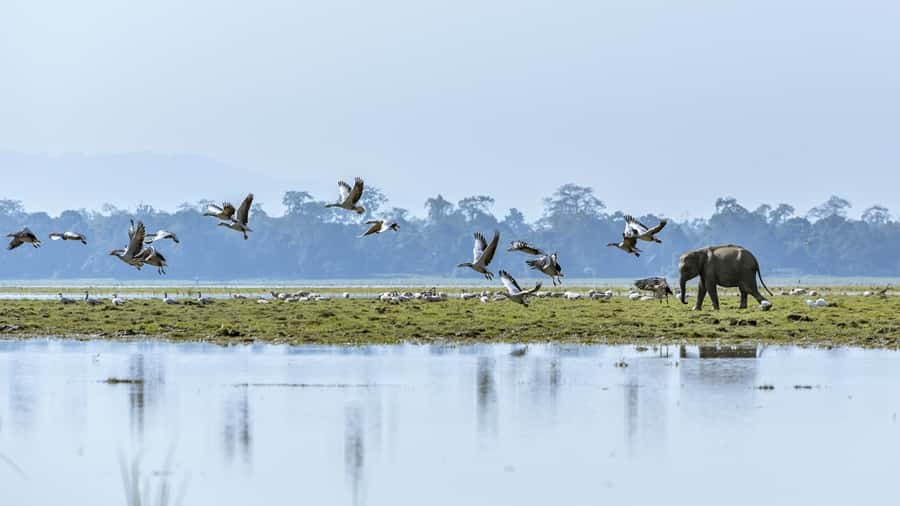
Not just in its four legged animals, Kaziranga is also as famous a National Park for its avifauna. Recognized as an Important Bird Area by Bird Life International for conservation of avifaunal species, the park is home to a variety of migratory birds as well as resident birds. From rare and threatened species to a large number of common and local birds, abundant flying beauties grace the confines of the world famous park. In its diversive ecology and location at the junction of the Australasia and Indo-Asian flyway, Kaziranga emerges as a rather substantial bird area. The many wetlands of the park play a crucial role for the conservation of globally threatened migratory bird species. As a result of such environment conducive to the winged creatures, the park is home to precisely 479 species of migratory and resident birds, out of which 25 are globally and 21 are locally threatened species.
Only Habitat of the Eastern Swamp Deer
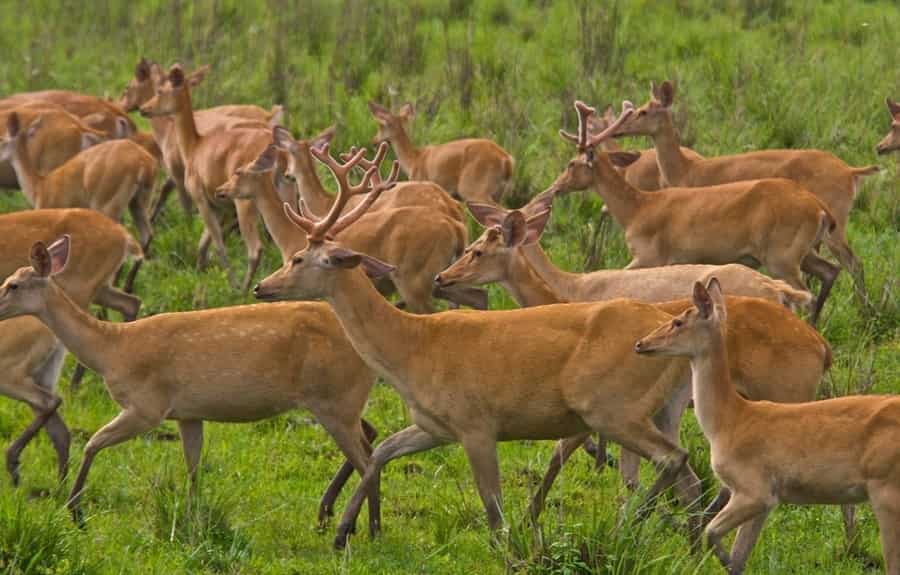
In its largely monopolised focus as being the single largest habitat for the rhinoceros, the Kaziranga National Park however is relatively lesser famous on other equally significant aspects. One such attribute that should make the park more than just a hotbed of the horned animals is its population of the eastern swamp deer. In fact as the only habitat in the world to house this species that are faced with a far more urgent threat than India’s rhinos, tigers or elephants, Kaziranga’s eastern swamp deer do not receive the recognition they deserve. In fact the eastern swamp deer makes up the Big Five hegemony in the park, along with the rhino, Royal Bengal Tiger, Asian elephant and the wild water buffalo.
With just about 1000 individual managing to persist in Kaziranga, the only known natural habitat at present, the species is far more endangered than most of the others that somehow thrive in at least more than a single habitat. Living in the swampy wetlands and grasslands, this critically endangered species though remains lesser known can still lure in more tourists and fame for the Kaziranga National Park.
Highest Density of Tigers
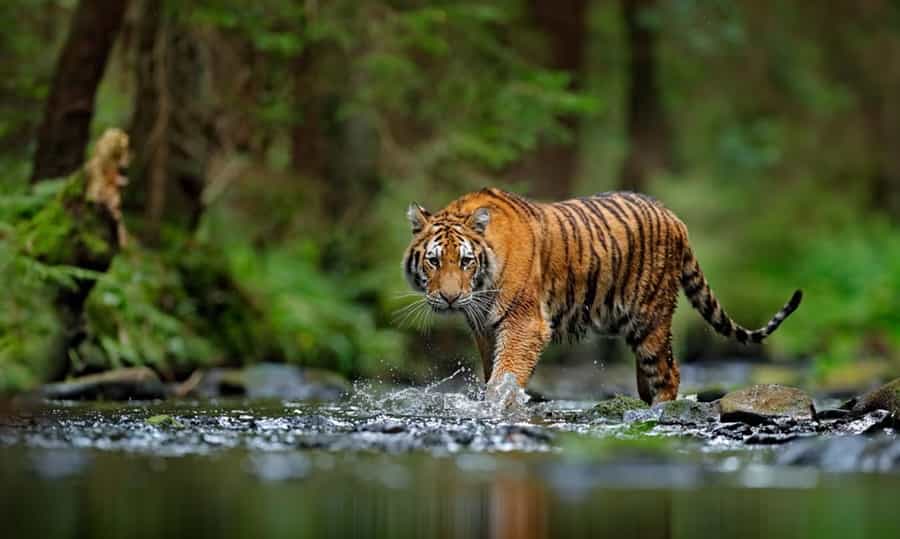
A Tiger Reserve since 2006, Kaziranga National Park is also famous for having the highest density of tigers among protected areas in the world. With 21 tigers per 100 sq km, Kaziranga has also emerged to be one of the few wild breeding areas outside Africa for multiple species of large cats, such as Bengal tigers and leopards.
Largest Population of the Wild Water Buffalo
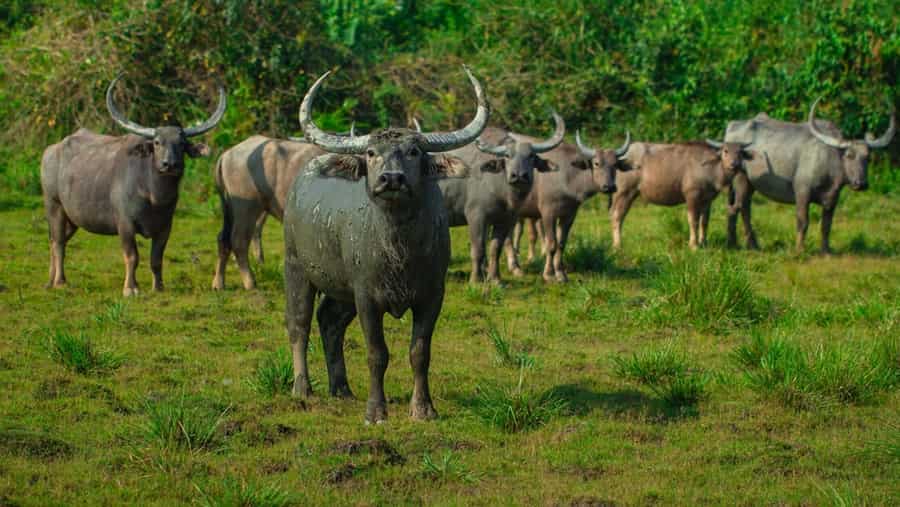
Kaziranga houses also the largest population of the Wild water buffalo anywhere accounting for about 57% of the world population. One of the last strongholds for the species that has been recognised as endangered, Kaziranga houses approximately some 1666 buffaloes. Also inhabiting a couple other national parks and wildlife sanctuaries in the state, the Asiatic buffalo is another of the prime attractions of the Kaziranga National Park.
Biodiversity Hotspot
In its massive encompassment of floral and faunal resources, Kaziranga National Park has very often been noted for its spectacular biodiversity. As one of the largest tracts of protected land in the sub-Himalayan belt, the park is significant in being a biodiversity hotspot. More specifically, Kaziranga National Park lies on the edge of the Eastern Himalaya biodiversity hotspot and combines high species diversity and visibility. In its many diversive dominant ecoregions, KNP possesses a biodiversity that is matched by only a few protected areas around the world.
From its semi evergreen forests and frequently flooded grasslands the world famous park rests in such extensive areas of biodiversity that has led it to nurture an amazing number and variety of species in its realm. Apart from its biodiversity treasure with the park, the Kaziranga National Orchid and Biodiversity Park also serves as a further insight into the rich biodiversity manifestation of the region.







 Call
Call WhatsApp
WhatsApp Enquiry
Enquiry